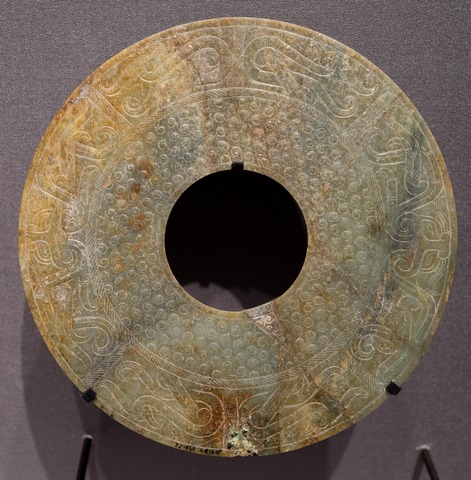
At historical Chinese dig sites, archaeologists find a great number of peculiar artifacts. One artifact in particular, known as bi disks, appear at face value to be flat, plate-like stones made of jade (and sometimes glass) with ornate carvings of dragons, beasts and images of the sky. The exact function of such disks is unknown but interested parties (anthropologists, sociologists and the like…) are immersed in how these objects have transmitted ideas and beliefs over time.
Any object maintains a “life history”—a trajectory, so to speak—tracing out an intricate path of individuals, environments, and actions…anything that meets its existence over the course of time and space. Bi disks maintain a remarkable history as the earliest indicators of ancient Chinese cosmological beliefs, which later continued to influence workings of pre-modern Chinese politics as symbols of status and power. While no written Chinese history has yet been discovered (or at least agreed upon widely enough to be completely verified as authentic), the markings upon bi found in early eras of Chinese history are consistent with bi hundreds of years farther into time. Considering its life history, any one bi disk that has traversed through time—from the burial site of some ancient Chinese ruler to the Jade exhibit in the Chicago Field Museum—has transported along with it the perceptions, emotions, expectations and social rules of the human individuals that interacted with it before. Thus, an archaeologist unearths a bi disk and, while unsure of its exact function, upon handling the object, he or she has become one in many human individuals to perpetuate its trajectory.
Ever wonder what kind of life your necklace or ring had before it got to you? Perhaps one day, someone will find it buried in the sand, only to place it in a museum and write its life history.